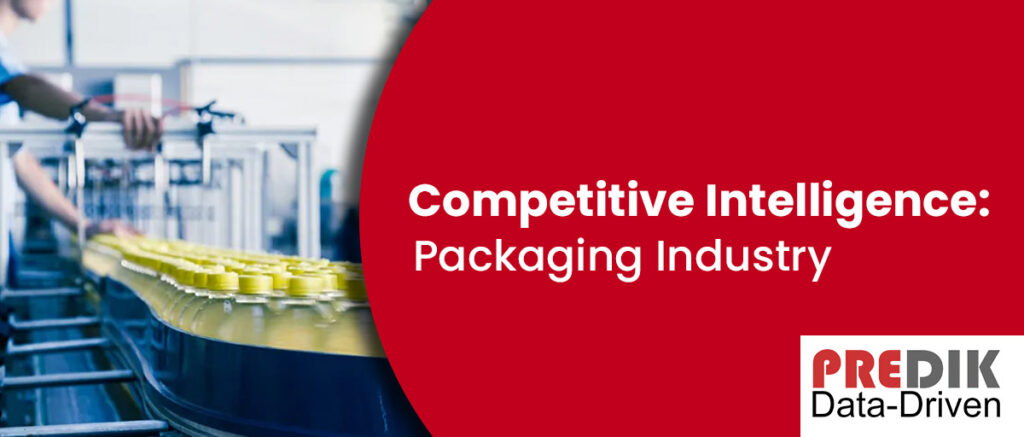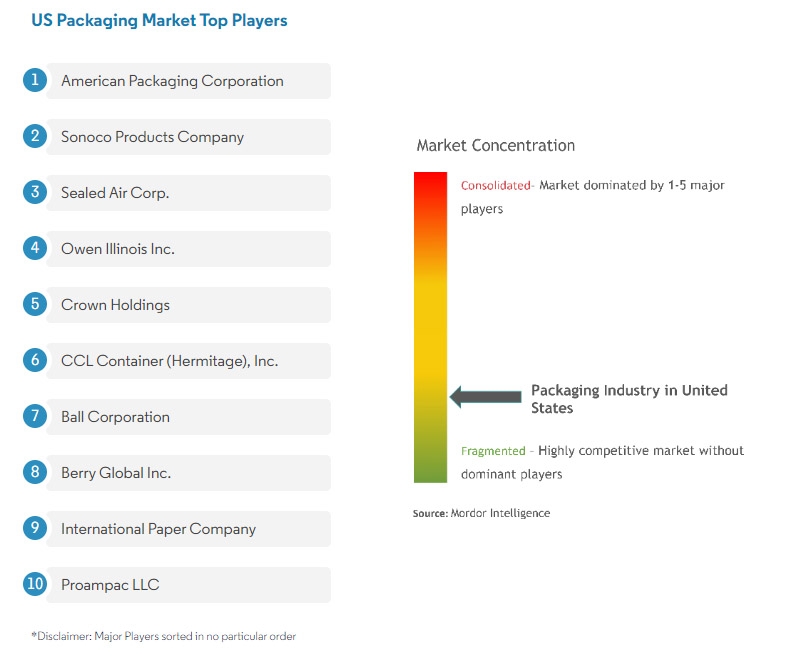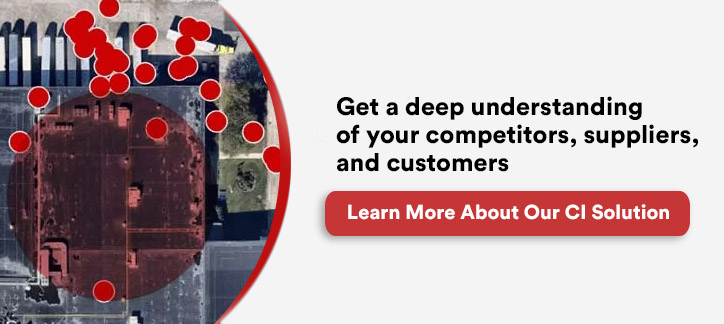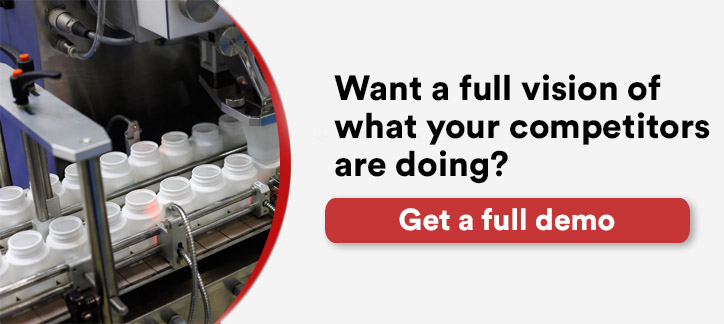The American packaging industry is rising and is not slowing down. According to Research and Markets, the sector has the potential to expand at a compound annual growth rate (CAGR) of 4.8% by 2025.
But what’s fueling this rapid growth? A triggering factor has been the consumers’ concerns regarding sustainability. Many companies are moving toward more environmentally and sustainable practices. This strategic pursuit has driven them to develop innovative and improved product packaging methods. As a result, some brands have grown faster in the last few years.
Did you know? In September 2021, Heinz joined forces with WestRock to replace shrink-wrapped multipacks containing Heinz Beanz, soups, and pasta assortments on supermarket shelves with an eco-friendly, recyclable paperboard crafted by WestRock.
Some of this year’s highlights involving the industry are:
- The food and beverage sector is the largest end-use segment for packaging in the United States, accounting for a significant market share.
- Other essential end-use segments for packaging in the United States include healthcare, personal care and cosmetics, and industrial products.
- Companies including Amcor, Berry Global Group, and Sealed Air Corporation dominate the market in the United States.
- Despite the growth of the packaging industry in the United States, some challenges are impacting the industry. These include the rising cost of raw materials and environmental concerns from consumers.
- Automation and digital technologies play a significant role in industry growth as companies look for ways to streamline operations and reduce costs.
In this article we will explore the following topics:
- Taking a closer look at the industry’s biggest challenges for this year
- Trends companies need to consider
- The importance of competitive Intelligence for the Packaging Industry
- Use case: Analyzing Graham Packaging using our new Competitive Intelligence approach (Using Artificial Intelligence and Geospatial Data)
- In conclusion
Taking a closer look at the industry’s biggest challenges for this year
This year, the packaging industry will face some challenges, including sustainability, cost-effectiveness, consumer demands, and regulatory compliance.
Sustainability: As we already explained, environmental concerns are growing. That is why companies must adapt by developing eco-friendly packaging solutions. Decision-makers need to consider the entire lifecycle of packaging materials, from production and usage to disposal and recycling.
Businesses must keep one crucial element on their radar: Consumers are looking for ways to reduce waste, incorporate renewable practices into their daily activities, and promote recyclability.
Cost-effectiveness: Balancing the demand for sustainable packaging with cost-effectiveness has become a challenge for companies. Businesses face the difficult task of remaining competitive without compromising quality or functionality.
Consumer demands: Today’s consumers are more informed and demanding. They expect packaging companies to be convenient, informative, and appealing.
This is why brands must adapt to changing preferences by offering innovative designs, easy-to-use features, and interactive experiences through Smart Packaging.
Regulatory compliance: The packaging industry must keep up with ever-changing regulations, which vary across countries and regions. In recent years, some regulations affected many companies’ choice of materials, labeling requirements, and recycling guidelines.
To remain competitive, ensuring compliance while maintaining cost-effectiveness and functionality is a challenge that businesses must address.
Supply chain disruptions: In recent years, the global economy got affected by numerous supply chain disruptions, such as labor shortages, transportation issues, and material scarcity.
The packaging industry must find ways to mitigate these risks and ensure a steady supply of materials and resources.
Digital transformation: The rise of digital technology has led to new opportunities and challenges for companies.
Digital printing, automation, and other advanced technologies have become a must for the industry.
Trends companies need to consider
Smart packaging: The integration of technology into packaging is transforming the industry. Smart packaging includes features such as QR codes, augmented reality (AR), NFC (Near Field Communication), and RFID (Radio Frequency Identification) tags. These technologies offer consumers interactive experiences, additional product information, and supply chain tracking capabilities.
Personalization: Brands are leveraging digital printing technology to create unique and customized packaging designs to fulfill market preferences and needs.
Personalization (Including packaging) allows companies to engage with their target audience and build stronger connections.
Packaging for e-commerce needs: When discussing e-commerce requirements, packages must be durable, lightweight, and cost-effective. One of the biggest concerns of e-commerce platforms is ensuring products arrive intact while minimizing shipping costs.
Flexible packaging: Flexible packaging materials, such as pouches, bags, and films, are gaining popularity due to their convenience, cost-effectiveness, and reduced environmental impact.
This trend responds to the increasing need for space-efficiency requirements that can adapt to various product shapes and sizes.
Did you know? Emerald Packaging, an American flexible packaging converter, launched a bag partially composed of potato starch. The innovative material features a mixture of 25% potato starch resin and 75% low-density polyethylene, resulting in a film that boasts superior strength compared to 100% low-density polyethylene (LDPE) films.
Circular economy principles: The concept of “circular economy” has become important within many industries, and packing is not an exception. More companies are focusing on designing packaging that can be reused, recycled, or composted. This approach aims to reduce waste, conserve resources, and minimize the industry’s environmental footprint.
Transparency and traceability: Consumers demand more information about their purchases, including packaging materials and manufacturing processes. Companies are responding with transparent labeling, detailed product information, and traceability solutions.
The importance of competitive Intelligence for the Packaging Industry
With the constant evolution of consumer preferences and market dynamics, the importance of competitive Intelligence for the packaging industry cannot be overstated.
The industry trends and challenges underline one crucial fact: Packaging companies must stay up-to-date with the latest trends, technologies, and innovations to remain relevant to the consumer. Competitive Intelligence gives businesses the tools to stay ahead and adapt to the ever-changing market dynamics.
Moreover, having a Competitive Intelligence approach has proven businesses to improve sales win rates, accelerate product development, and improve their relationship with target customers.
Also, by understanding the competitors’ strategies and the latest industry developments, packaging companies can craft better products and services that align with the evolving needs of their customers. This further underscores the significance of staying informed about the competition in this industry.
“In a world where change is the only constant, businesses need to be agile, adaptable, and ready to pivot at a moment’s notice”
Forbes Tech Council
A new approach to Competitive Intelligence in the era of Artificial Intelligence, Big Data, and Geospatial Data
Big Data, Artificial Intelligence technology, and Machine Learning solutions are increasingly becoming essential components for packaging companies. Today, decision-makers can tap into vast amounts of data from users, market trends, and competitors to formulate highly effective strategies.
Recognizing the importance of providing valuable insights to businesses, at PREDIK Data-Driven, we have developed a novel approach to Competitive Intelligence analysis tailored specifically for the packaging industry.
Setting ourselves apart from most CI firms that focus on monitoring social media interactions, website performance, and sales calls, we employ geolocation technology to monitor the entire packaging landscape across the U.S.
Our innovative methodology involves detecting movement patterns and connections between targeted locations and other facilities or companies and using a specialized machine-learning algorithm and satellite data for comprehensive analysis.
In doing so, we can generate “connection maps” that reveal the intricate relationships between your competitors and their business ecosystem (Including their customers, suppliers, distributors, and other key players within the industry).
We recommend you reading: Understanding Competitive Data: Benefits, Uses and Sources
Use case: Analyzing Graham Packaging using our new Competitive Intelligence approach (Using Artificial Intelligence and Geospatial Data)
Graham Packaging Holdings is a leading global manufacturer of innovative and sustainable plastic packaging solutions. The company specializes in creating customized packaging for a wide range of industries, including food and beverage, personal care, automotive, and household products.
The brand is highly committed to becoming sustainable. They have been working to minimize their environmental impact by using recycled materials, reducing energy consumption, and developing eco-friendly packaging designs.
Graham Packaging operates over 86 manufacturing facilities in North America, Europe, and South America. Their headquarter offices, as well as their recycling company, are located in Pennsylvania.
Using our CI approach to analyze the company
We analyzed a number of Graham Packaging facilities in order to identify the top relevant connections in each facility. Overall, the brand shows strong business relations within the Food and Beverage Industry.
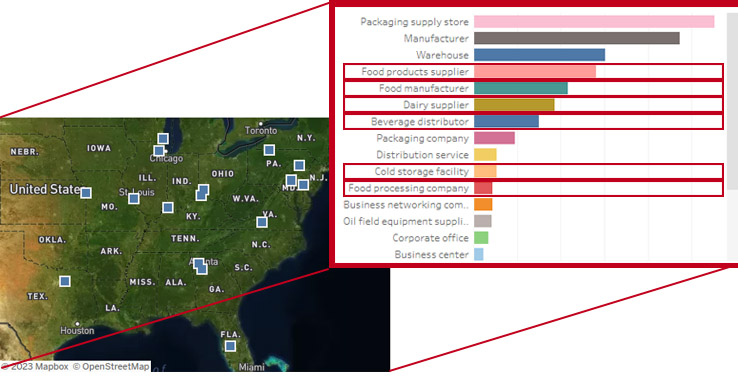
Our geospatial analysis shows that Graham Packaging relates with Food and Beverage brands like:
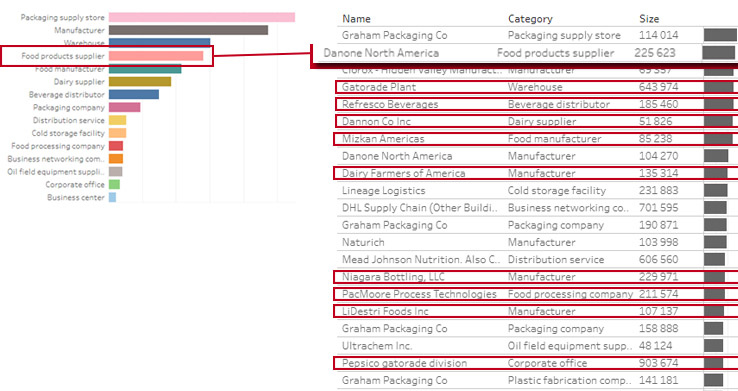
- Danone North America and Dannon Co.
- Gatorade Plant and Pepsico
- Refresco Beverage (One of the world’s largest independent bottlers of beverages).
- Mizkan America Inc. (Leading brand of seasonings and processed foods for retail and food-service markets in North America)
- Dairy Farmers of America
- Niagara Bottling LLC
- LiDestri Foods Inc (Premier private label and contract manufacturer of food, beverages, and spirits).
Other business relationships found
We detected a strong relationship between Graham Packaging and a major brand within the manufacturing and consumer & professional products industry…Clorox.
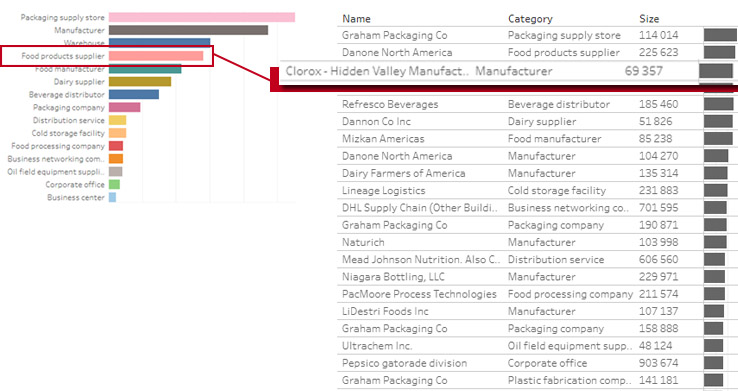
Also, data shows Graham Packaging and Lineage Logistics are working together. Lineage Logistics is a global leader dedicated to providing temperature-controlled logistics.
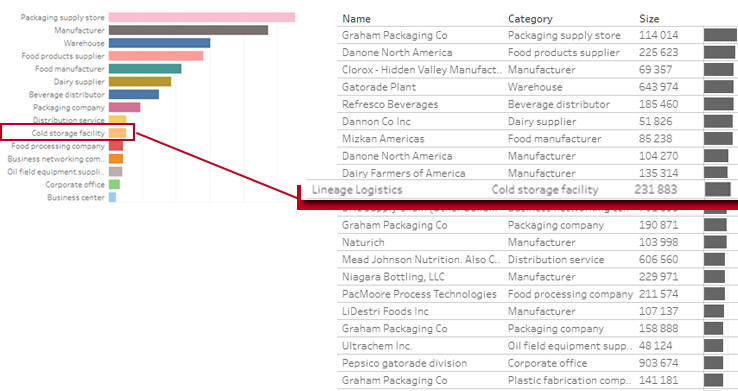
In conclusion
In the fast-paced packaging industry, adopting an effective competitive intelligence strategy is essential for every company. As market dynamics and technological innovations constantly evolve, it is vital for businesses to closely monitor their competitors and remain up-to-date with the latest consumer trends and industry developments.
Competitive intelligence solutions offer valuable insights and enable businesses to make well-informed decisions while maintaining a competitive edge.
Through our cutting-edge Competitive Intelligence solution, companies can strengthen their market standing, enhance profitability, and ultimately secure long-lasting success.

